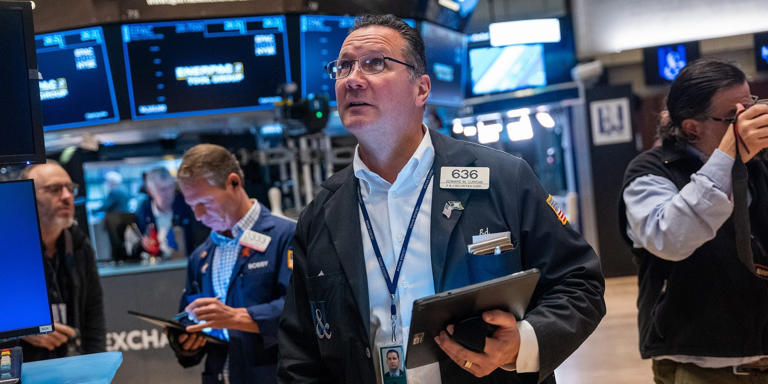Charles Schwab has noted that current market dynamics are starting to resemble those of 2021, potentially signaling an impending bear market. One of the key indicators of this is the growing divergence between index-level performance and individual stock performance. Despite the S&P 500 enjoying a robust bull run, the number of individual stocks reaching new highs is declining.
Earnings Season and Market Reactions
The recent first-quarter earnings season was notably strong, with profits exceeding expectations by 9%—the largest surprise since 2021, according to Morgan Stanley. This is significantly higher than the historical average beat rate of 4.8% and even the previous quarter’s 6.9%. Over half of the companies in the S&P 500 reported better-than-expected earnings, with earnings now projected to rise 8.3% year-over-year. Despite this, the market has not responded as positively as one might expect. Stocks that beat both sales and earnings estimates saw only a modest next-day gain of 1%, while those that missed on both counts experienced a 3.5% loss.
Market Valuations and Future Projections
One reason for the muted reaction to strong earnings could be the high valuations already present in the market. The S&P 500 is trading at historically high earnings multiples, with UBS estimating a full-year price target that suggests only a modest 3.6% increase by December. Goldman Sachs has similar projections, forecasting the S&P 500 to end the year at around 5,200, based on earnings estimates for 2024 and 2025. Both firms believe that the economy will continue to grow despite high interest rates, which is crucial for maintaining current stock valuations.
Divergence Between Index and Individual Stock Performance
A significant concern raised by Charles Schwab is the growing divergence between the performance of the overall index and individual stocks. This pattern is reminiscent of the second half of 2021, a period that preceded a substantial market correction in 2022. Although the S&P 500 has reached record highs, the percentage of individual stocks trading above their 50-day moving average has decreased. This discrepancy suggests underlying weakness in the market that is not immediately visible at the index level.
Concentration in AI and Specific Sectors
The current bull run has been heavily influenced by a narrow concentration of stocks, particularly those benefiting from the AI boom. However, not all of these top performers are in the Technology sector. For instance, three of the top-10 best-performing stocks this year are in the Utilities sector, highlighting the benefits of AI and the build-out of the energy grid. This concentration on a few high-performing stocks has masked the broader market’s underlying weaknesses.
Wall Street’s Mixed Outlook
Wall Street’s outlook on the market varies. Goldman Sachs and UBS maintain a relatively optimistic view, suggesting that stocks can continue to rally if high interest rates are accompanied by resilient economic growth. Conversely, Morgan Stanley is more pessimistic, forecasting a potential decline in the S&P 500 to 4,500 by the end of the year. They argue that current valuations are overly optimistic given the higher-rate, lower-growth environment.
Stable-Growth Stocks as a Safe Haven
In this uncertain environment, stable-growth stocks have become attractive to investors. These stocks, characterized by robust balance sheets and consistent earnings growth, tend to perform well even when broader market conditions are volatile. Goldman Sachs has identified 25 stable-growth stocks with low earnings variability, suggesting they could be a safer investment choice if the market continues to be unpredictable.
Conclusion
The market’s current behavior, characterized by a divergence between index-level gains and individual stock performance, mirrors the dynamics seen in 2021. This could be a precursor to a broader market correction. Investors are advised to be cautious and consider diversifying their portfolios to include stable-growth stocks, which could provide some insulation against potential market downturns. As the market navigates these uncertain times, the upcoming shareholder meetings and earnings reports will be crucial in determining the direction of stocks for the rest of the year.
